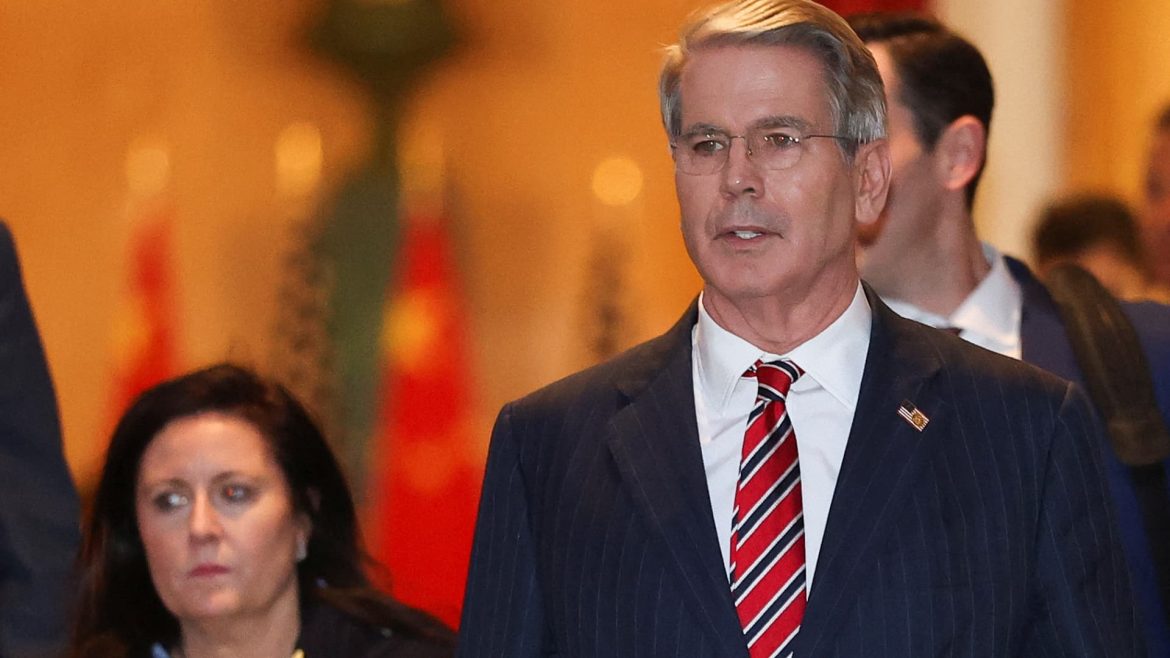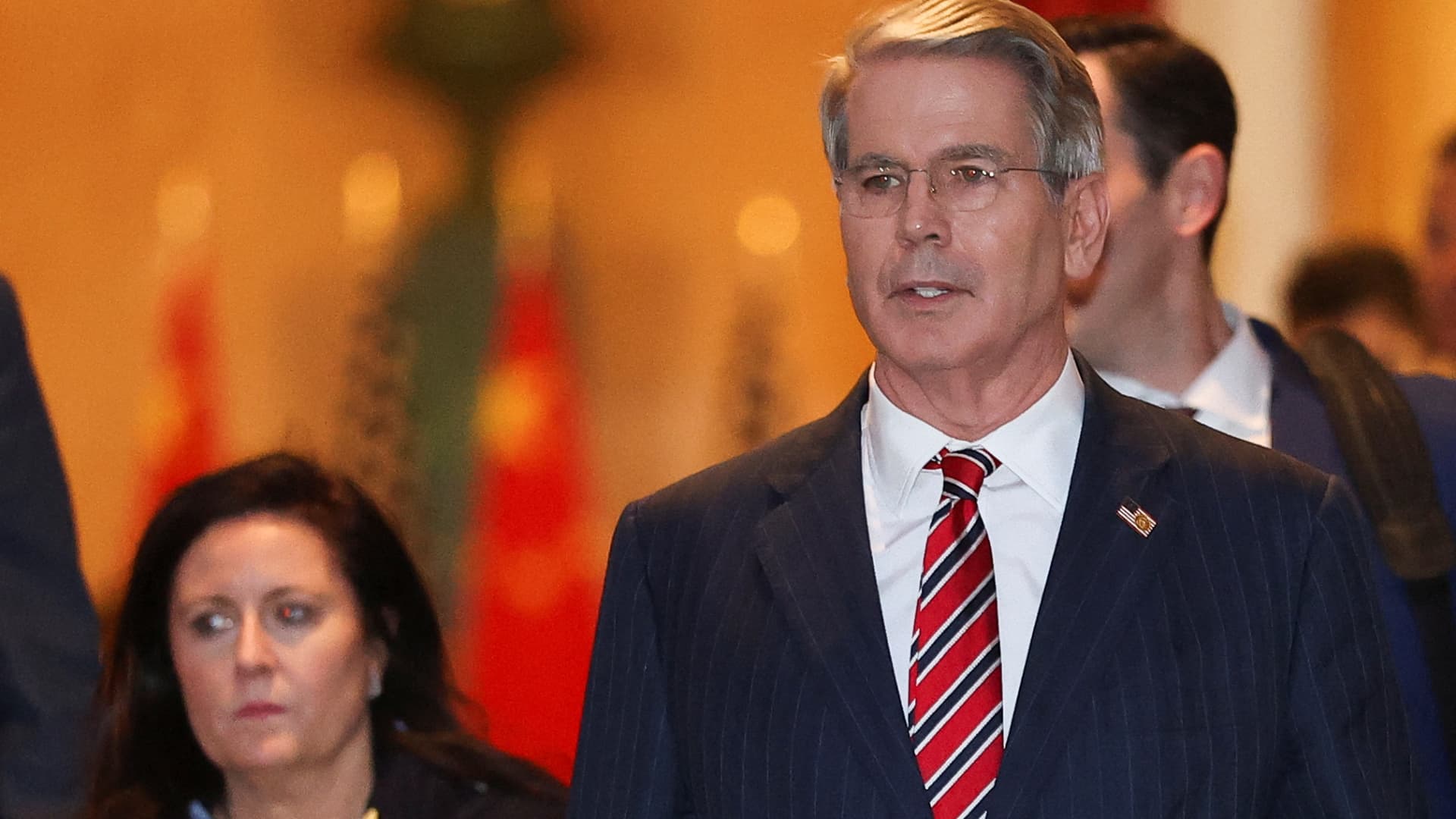Navigating the US-China Trade Landscape: A London Summit Analysis
The US-China trade relationship, a complex and often turbulent dynamic, has once again taken center stage with recent talks held in London. These discussions, stretched over two full days and potentially extending into a third, signal a continued effort to navigate the existing trade divide. While details remain somewhat opaque, the presence of key figures from both administrations provides insight into the priorities and potential outcomes of these negotiations.
Key Players and Their Roles
The US delegation is comprised of several prominent figures: Treasury Secretary Scott Bessent, Commerce Secretary Howard Lutnick, and U.S. Trade Representative Jamieson Greer. Bessent’s role, particularly his early departure to testify before Congress in Washington D.C., highlights the domestic pressures influencing the US stance. Despite his leaving, Bessent characterized the talks as “productive,” and emphasized that discussions would continue. This suggests a division of labor, where Lutnick and Greer maintain the momentum while Bessent attends to Congressional obligations.
On the Chinese side, Vice Premier He Lifeng leads the delegation. His presence underscores the importance China places on these negotiations and signifies a willingness to engage at a high level.
The Focus of the Discussions
The overarching goal of the London talks appears to be fortifying the temporary trade truce established earlier in the year, which is slated to expire in August. The discussions are centered around specific areas of contention, including US export controls and China’s rare-earth element trade. These elements have been at the heart of the trade war instigated by President Trump.
- Export Controls: The US has implemented increasingly stringent export controls, particularly targeting advanced technologies. China views these controls as a barrier to its technological advancement and seeks to ease these restrictions.
- Rare Earth Elements: China dominates the global supply of rare earth elements, critical components in various high-tech industries. The US is concerned about China potentially using its control over these resources as leverage in trade negotiations.
Beyond these specific issues, the talks likely encompass broader economic concerns, including market access, intellectual property protection, and the overall trade balance between the two countries.
Signals and Interpretations
Several key signals emerge from the reports:
- Productivity vs. Stalled Progress: While Bessent characterized the talks as productive, other sources suggest potential obstacles. This mixed messaging could indicate a delicate negotiation process where progress is being made in some areas while disagreements persist in others.
- The Role of Leadership: The possibility of a phone call between President Trump and Chinese leader Xi Jinping suggests that higher-level intervention may be necessary to overcome certain sticking points. This highlights the significant political dimension of the trade negotiations.
- Continuation of Discussions: The talks stretching into a second day, and potentially a third, underscores the complexity of the issues and the commitment of both sides to finding common ground.
- Global Market Sensitivity: Reports highlight the sensitivity of financial markets to the US-China trade talks, reflecting the global economic impact of any potential agreement or escalation.
The Broader Context
The London talks are occurring within a broader context of ongoing trade tensions and strategic competition between the US and China.
- Trump’s Trade War: The trade war initiated by President Trump has resulted in tariffs on hundreds of billions of dollars’ worth of goods traded between the two countries. These tariffs have disrupted supply chains, increased costs for businesses and consumers, and created uncertainty in the global economy.
- Technological Competition: The US and China are engaged in intense competition for technological leadership, particularly in areas such as artificial intelligence, 5G, and semiconductors. Trade policies are often used as tools to advance national interests in these strategic sectors.
- Geopolitical Considerations: The trade relationship is intertwined with broader geopolitical considerations, including security concerns in the South China Sea, human rights issues, and differing approaches to international governance.
Moving Forward: Potential Outcomes
The London talks represent an important step in managing the US-China trade relationship. Several potential outcomes are possible:
- Extension of the Trade Truce: The most likely outcome is an extension of the existing trade truce, providing a temporary reprieve from further escalation. This would allow both sides to continue negotiations and seek a more comprehensive agreement.
- Targeted Agreements: The two countries could reach targeted agreements on specific issues, such as export controls or agricultural purchases. This would demonstrate progress and build confidence, but it would not necessarily resolve the underlying structural issues in the trade relationship.
- Breakdown in Negotiations: A breakdown in negotiations could lead to a renewed escalation of trade tensions, with the potential for new tariffs and further disruptions to global trade.
- Comprehensive Trade Deal: A comprehensive trade deal would address the core issues in the US-China trade relationship, including tariffs, market access, intellectual property protection, and enforcement mechanisms. While this outcome is less likely in the short term, it remains the ultimate goal of both sides.
A Relationship Defined by Interdependence and Competition
The US-China trade relationship is characterized by both deep interdependence and intense competition. These talks highlight the ongoing efforts to manage this complex dynamic and find a path toward a more stable and mutually beneficial economic relationship. Ultimately, the success of these negotiations will depend on the willingness of both sides to compromise and find common ground, recognizing the significant economic and geopolitical implications of their decisions. The global economy is deeply intertwined, and cooperation, even amidst competition, is essential for sustained prosperity.





